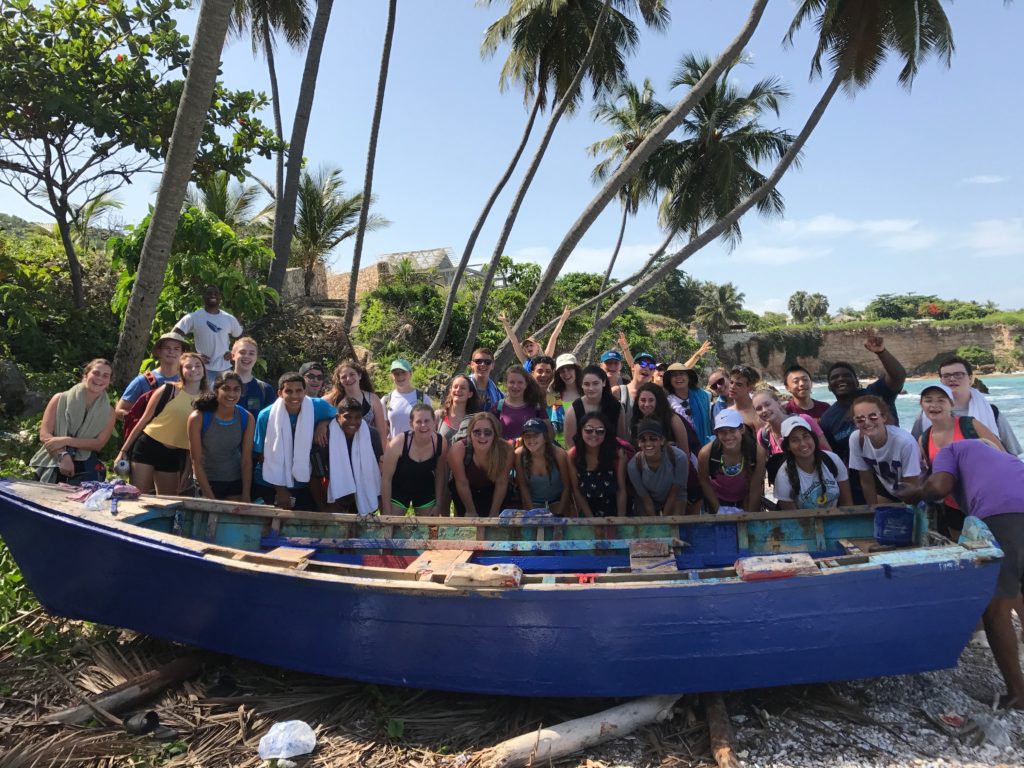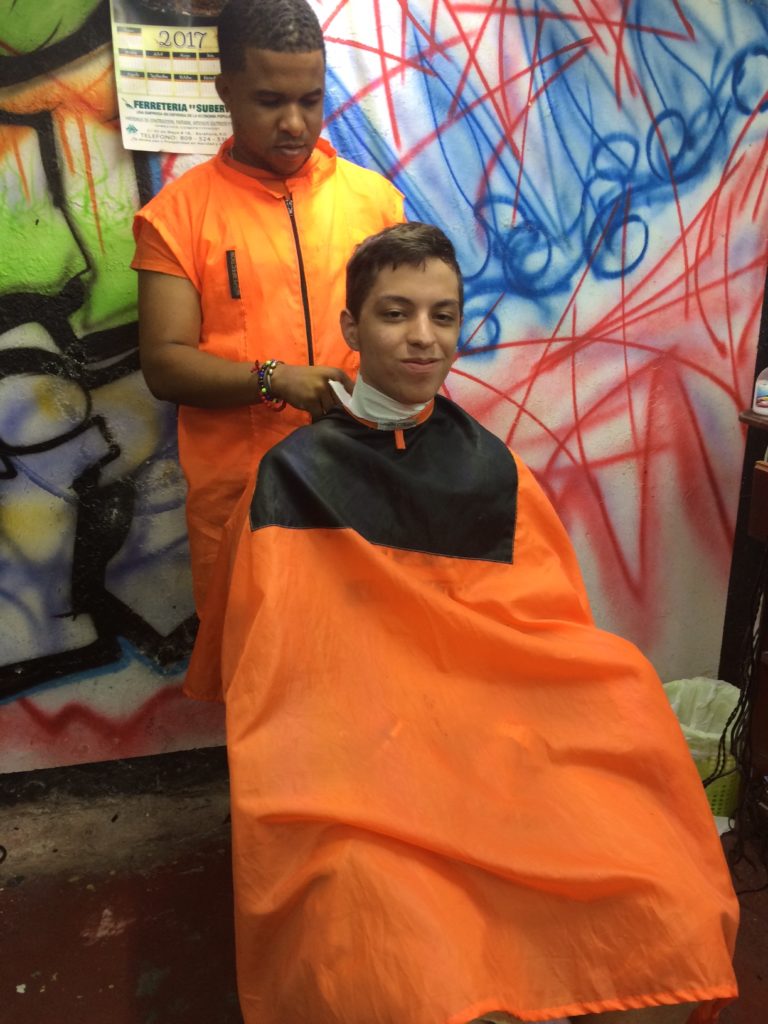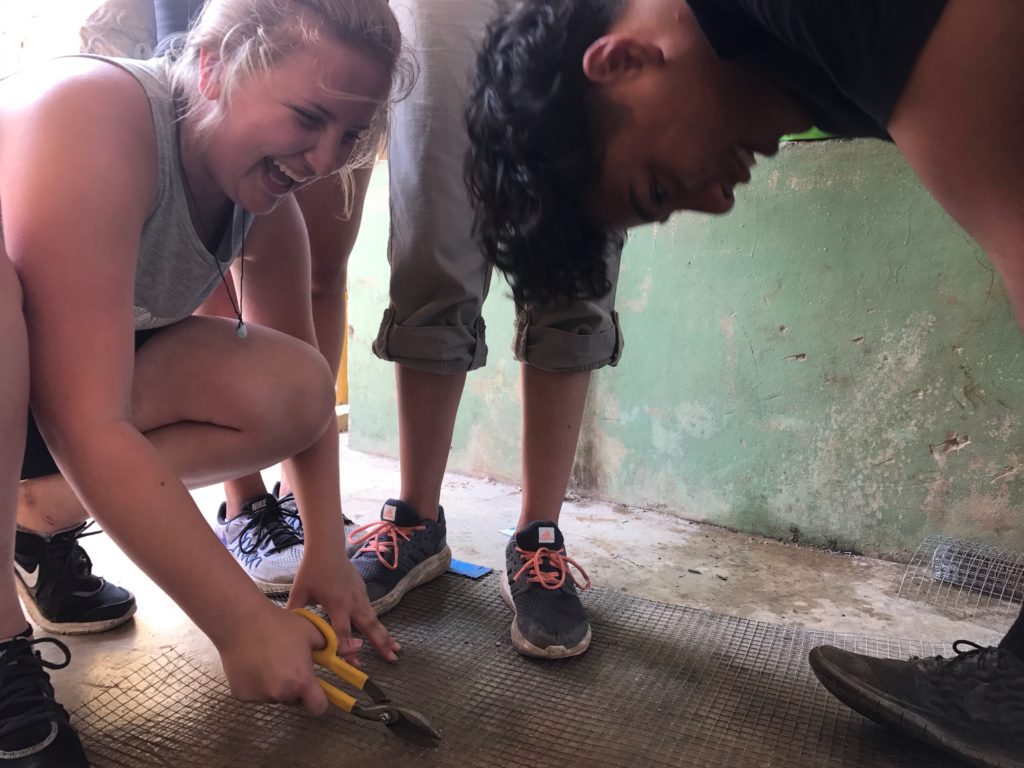June 26, 2017
As my first day consisted of getting settled and meeting new people, my journey to new adventures began. While living in India for few years as a kid, I got to see certain similarities within the cultures. Having to look both ways and hurrying to cross the street was definitely one of them. As we walked through the city, my favorite part was walking by local small shops that had their own jams playing. Usually in the States, the shops look slightly formal where these just looked fun. Speaking of locals, a big difference I learned from the Dominican versus more developed countries around the world is the type of poverty. Here I witnessed more of a survival-based poverty with the people craving basic needs, compared to mental poverty I’ve seen in the US, with people searching for belonging and security. We are excited and looking forward to the new adventures and lessons that will come our way!
June 28, 2017
There are plentiful varieties of fruits in the Dominican Republic. We ventured into a community where this feat was no exception. The women’s cooperative which we visited was extremely humbling as we learned that these women standing for long hours to produce an indigenous jam: marmelade. We learned that all profits are split equally and that their business is their livelihood. And that livelihood provides for their children to go to school. This is a testimonial to women’s empowerment and it was awe inspiring. Everything is made fresh, and the thought of using preservatives would be unthinkable. Moreover when we journeyed deeper into the community’s center, we noticed various extraordinary contrasts in viewing the Dominican Republic’s different way of life. In addition, we also saw that there are different strengths and weaknesses in the seven elements of sustainability in the Dominican Republic when compared to where we all come from.
Today June 29th, we did a lot of interesting experiences. An interesting thing we did was listen to Michelle, a Haitian-Dominican migrant. He had some disturbing things to say but also it was great to learn about what he does for example he provides houses to the women that got abused or anything from the Dominican men. The fun part, we had to work with the cement which was pretty fun. Everybody enjoyed making the cement and helping improve the house.
Day 5
After breakfast we all gathered on the terrace to listen to Ben talk about our capstone projects. After we had finished talking we broke up into our groups to discuss our own capstone projects. We are going to analyze a assigned community project that we do as a group and see how much it can help the seven elements of human security. We then design our own project, either completely new or an extension of the old project, to improve one of the elements of human security that the community struggles with. After discussing our projects, we departed for lunch, which was rice, beans, chicken, and salad on the beach at a beautiful restaurant. After lunch, we departed for a tour around the only wind farm in the D.R. The ride was an hour and change, but the ride was beautiful as it was along the coast. The wind farm had 60 wind turbines and at maximum wind speed could produce up to 7% of the D.R.’s power. A lot of people were tired during the lecture, but it was extremely interesting. After finishing up the presentation, we headed down the road to take pictures at a lookout on the wind farm, and then headed back to home base. We then had dinner and broke into our mentor groups for an hour and discussed the journal prompt from the night before, which was about America’s responsibility to try to repair damage it has caused in foreign countries. After group time, we had free time for about an hour, during which a lot of people jumped in the pool. We were all tired, but it was a fun day!
Yesterday our group went to the town of ……… and we all learned about the hardships of the civilians, their lifestyles, and how they get their water. We arrived in the morning and worked until early afternoon on painting their water pump station and then had lunch by the river and bought snacks, swam, and had a chance to reconnect on wifi.
In the evening, we watch a documentary about a case study on a forced the forced migration of the people in a community here in the DR due to climate change.
Claire & Nic.
Today we adventured through the town of Barahona within our mentor groups to accomplish a scavenger hunt. The hunt included conversing with locals and navigating through the streets, as well as completing silly tasks such as students getting our nails done and receiving a typical Dominican haircut. In scavenging throughout the town, we discovered typical drinks and apparel. With a limited budget and unlimited enthusiasm, every group received five hours to explore the town. When the groups reunited, the smiles on the students’ faces were as countless as the memories made throughout the day. The conversations today allowed many students to practice their Spanish through conversation.
After dinner, we met with Marcela, a Colombian expat managing a house for misplaced children in Haiti. Today we learned about the practically nonexistent government and public services as well as the problems with the birth rate. Learning about the problems with children crossing the border from Haiti to the Dominican Republic was an eye-opening experience. The speaker’s discussion of her life experience through her work allowed many students to question previous beliefs on the relationships between the two nations inhabiting the island of Hispaniola. The students today experienced a mixture of cultural immersion and fun activities.
Our group spent the day at the town of Jimani on the Haitian border. We walked through the crowded streets and bought clothes, food, and soda. The market was a really interesting look into the cultural exchange between these two countries. It was difficult to tell who was Haitian and who was Dominican, and it was a challenge to decide whether to speak French or Spanish. The streets were littered with trash and there was lots of dust that would blow into our faces. The locals seemed extremely comfortable in the crowded streets. They were used to jumping out of the way of buses and motorcycles; they were used to the yelling of locals and the guards that surveyed the border.
For our Fourth of July in the Dominican Republic, we began our main service project at the Cocos de Abajo school. We started constructing a new room for their community school. Using plastic bottles as insulation, we created walls that will soon be sealed with cement. We spent our afternoon connecting with the local children of the community by enjoying fresh coconuts and playing volleyball together. Our evening lecture was a continuation of our ongoing unit on what it means to be sustainable. More specifically, we learned about the threats to the Dominican Republic’s economic security. We applied our newfound knowledge concerning unequal wealth distribution in the Dominican Republic as it compares to other countries in the world. To wrap up our Fourth of July festivities, we gathered on the home base roof to star gaze and listen to our musically inclined friends sing and play songs on the guitar.
–Luc Epstein and Anna Kerwin
Today, July 5, we returned to the Cocos de Abajo and continued our bottle building project. We split the group up into two groups. Half of the group cut the chicken wire and stacked the bottles into the walls, while the other group walked down to the beach and collected water bottles. At about halfway, we switched groups. We are about 85% done with the bottle structure school room and we will be completing it upon return.
After work, we participated in a traditional Dominican dance class. We learned the Bachata and Merengue. It was cool seeing all the different age groups within the community coming together and participating in the dances. After that, we watched a video on consumerism. Then we broke into mentor groups where we discussed the video along with other issues in the Dominican Republic.
–Allie Cline
It was really nice to be able to discover a new aspect of life in Cachote and to have a feel on what it is like to live in a rural community and to distance ourselves from our comfort zones. It was an eye opening adventure that enabled us to see a community different than the one in Barahona and from the ones at home, seeing its pros and cons. It was also really interesting to see how a community can live in isolation at a high altitude, and how happy they are about it. Everybody loved their experience and enjoyed sharing the journey with each other and the locals.By: Elise Descamps
Day 16
After some great times at cachote, we went back to Cocos De Bajos to finish cementing the school room. While most people cement and finish putting in the bottles for insulation, others would play with the locals and make good friends! Since this was our last day doing service for the school, it was extremely bitter sweet. Since we are a group of 36 people, we split up the work, so before lunch, 18 of us would be playing soccer with all the locals, and the other 18 would be finishing the job. Going to Cocos De Bajos was extremely eye opening. The community is so strong and everyone knows each other. They are truly so connected. Rather than playing on phones for hours alone in their room, they play outside and form real bonds with each other. Everyone is also very friendly, you could say “Hola!” to anyone and they will say it right back with a big smile. Spending time in the community is highly beneficial to advancing our understanding of the culture in the Dominican Republic.


















